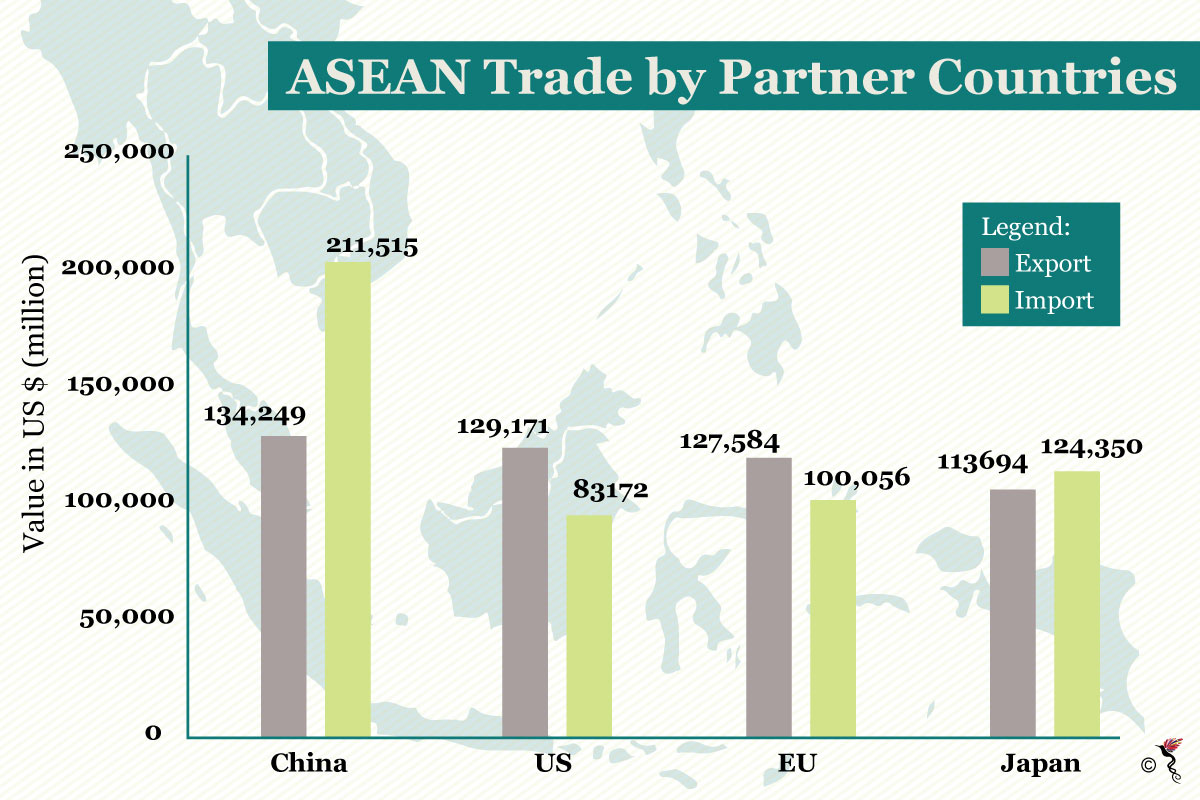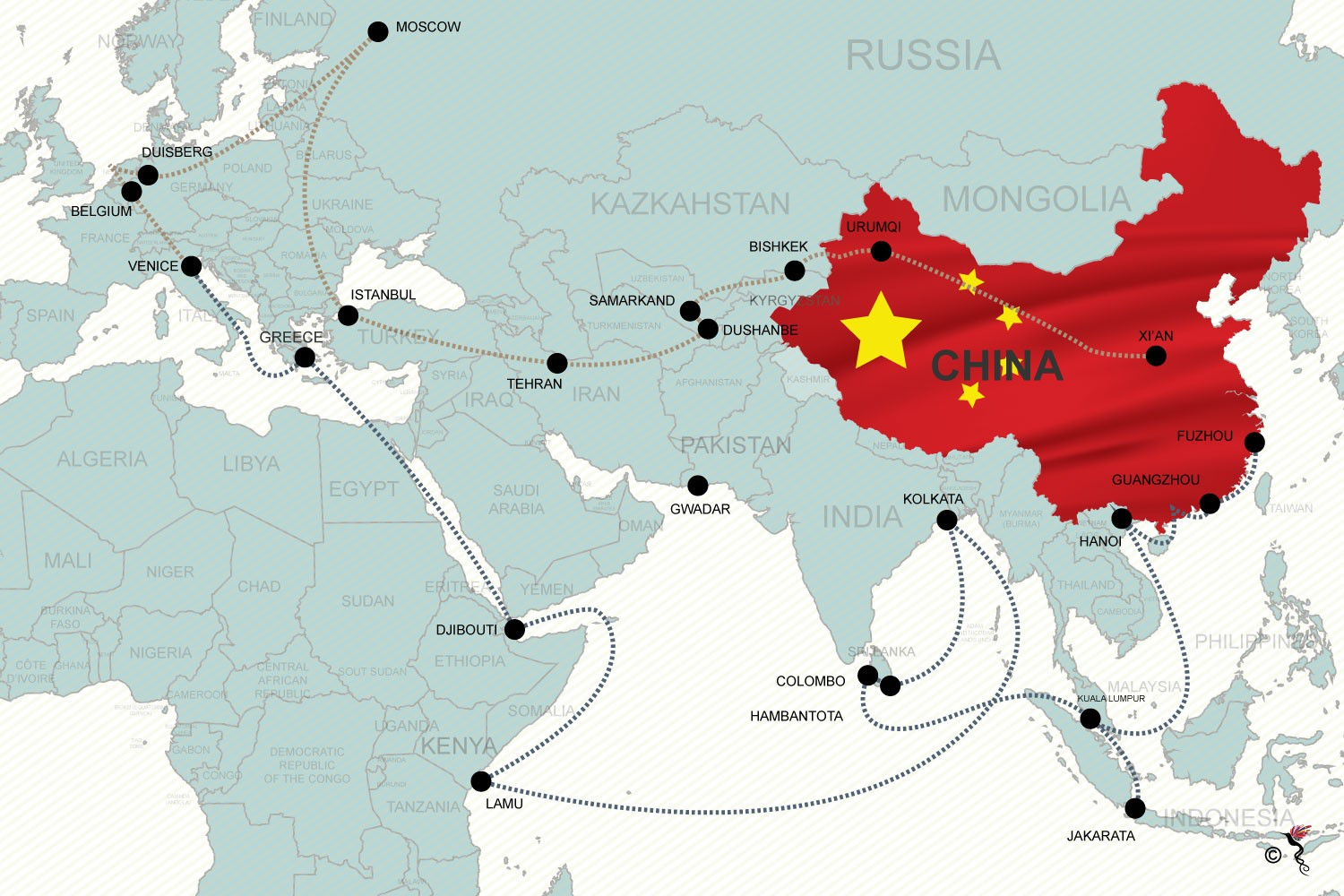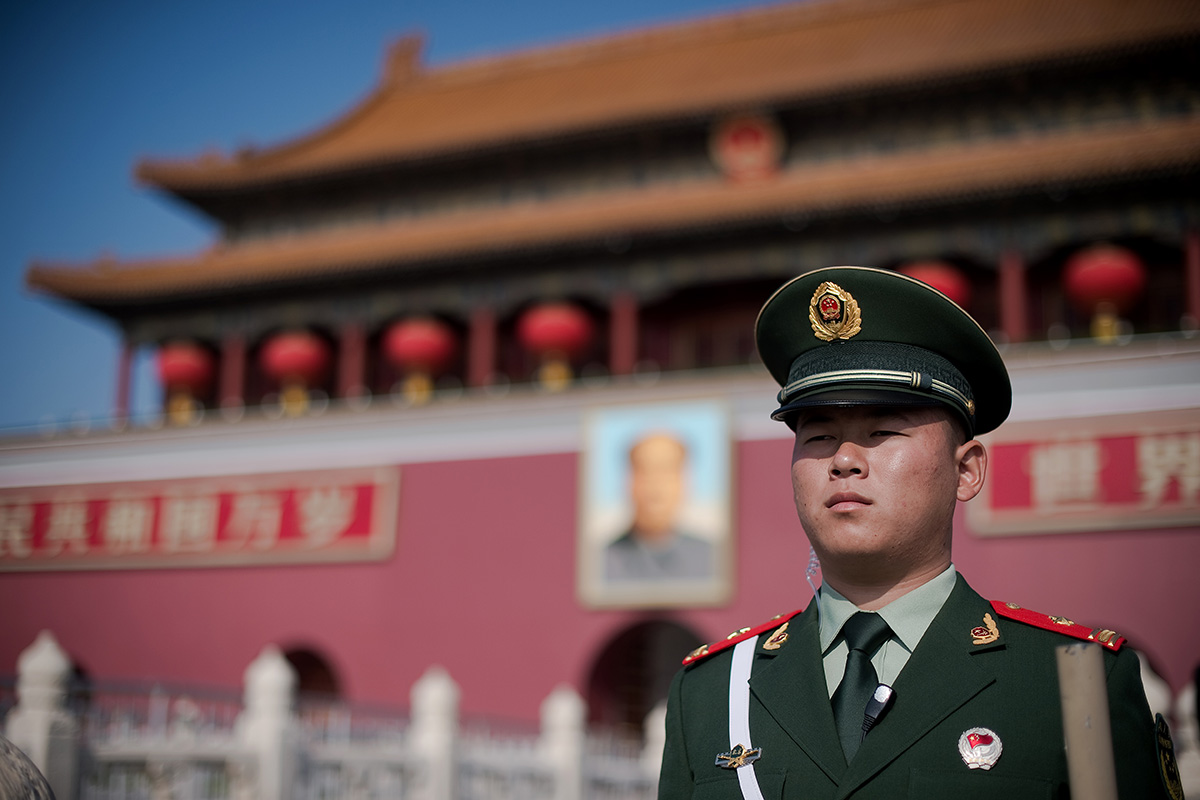Historical fact and figures – Chinese merchants, European influence, independence in SEA and a mix of US leadership and non-alignment.
Southeast Asia has been for centuries an incredibly thriving region and a great business centre. It has received and given a great diversity of influences.
Chinese merchants and Chinese trade in general has played a great role in these cultural influences as early as the fourth century BC and it continued for over 10 centuries with the setup of diasporic communities along the trade routes.
It is said that in the streets of Melaka over 80 different languages were spoken more than 500 years ago. Various countries in Southeast Asia have known European colonisation for centuries, mainly from the 16th to the 20th century in a period when China was less influential in Southeast Asia.
If we fast-forward to the aftermath of WWII, the era of the cold war set the stage for weakened European countries to decolonise while the US proceeded to increase its influence in the region. China was recovering from the Japanese occupation and facing internal conflicts with its civil war only ending in 1950.
Interestingly, the Bandung conference took place in 1955, gathering Asia and African countries who claimed their right to self-determination against colonialism and neo-colonialism and their unwillingness to follow either of the blocs during the cold war.
Following the end of the cold war, US influence in the region became increasingly significant and authors like Fukuyama were already proclaiming the “end of history” as if US hegemony around the world would last forever. In the meantime, while most observers were looking elsewhere, China’s leaders – starting with Den Xiaoping who led China from 1978 to 1989 – shifted its communist economy to what can be referred to as a “state capitalism” which encouraged massive investments and increasing trade with other countries. To a certain extent, what would follow was rightly perceived by Alain Peyrefitte in his famous book “Quand la Chine s’eveillera” written in 1973, which is literally translated to “When China wakes up”.
China is back on the map and after focusing on other priorities, the US decides to operate a pivot to Asia-Pacific under the Obama administration
Through decades of industrialisation, China moved up the value chain step-by-step as the “sleeping dragon” became a key player in the world’s economy. In 2000, China was already ranked third in terms of GDP after the US and Japan. China started to invest early in breakthrough technologies and the increasing number of patents proved its willingness to innovate. Simultaneously, the number of Chinese students studying abroad (especially in the US) was increasing.
Politically, the late 90s and early 2000s was also marked by the handover of Hong-Kong to China (1997) and its progressive effects. While keeping special administrative rights, Hong Kong was eventually handed back to the Chinese. Subsequently, China developed its economic ties with its Southeast Asian partners.
Meanwhile, in the 2000s, the US foreign policy was focused mainly on the Middle East, giving China the opportunity to strengthen its role as a regional power of influence, especially in Southeast Asia.
Obama’s “pivot to Asia-Pacific” marked a major shift in the priorities of the US foreign policies. The Pacific Ocean – the centre of worldwide trade with the vast majority of the world’s GDP on either side – has been observing an interesting showdown between the US and China to be the most influential foreign power in Southeast Asia since 2008.

Export and import values of ASEAN trade by partner countries.
Changing World order: Chinese long-term bamboo diplomacy Versus US uncertainties
Throughout the second decade of the 21st century, especially under Xi Jinping's presidency, China’s foreign policy has been recalibrated to fit a changing paradigm in the world. While keeping a long-term approach to its goals and objectives, China became more proactive in international affairs from the business and security perspectives.
Examples of China’s efforts in becoming a regional (if not global) leader are abundant in various continents – such as in Europe and Africa – while neighbouring countries and regions are being substantially transformed through a number of ambitious plans: the silk road project, island-building in the South China Sea and massive investments in Southeast Asia, which include infrastructure, tech deals, bilateral agreements and the ASEAN-China free trade agreement.

China's vision of a land and sea-based trading network under the BRI (Belt and Road Initiative).
The election of Trump in the US marked another major shift in the US foreign policy and its approach to international trade. While the previous administration was trying to balance the inexorable rise of China’s influence within the region, Trump decided to pull out of the Trans-Pacific Partnership. This trade deal was initially signed by 12 countries that border the Pacific Ocean and represent altogether roughly 40 percent of the world’s economy output: Australia, Brunei Darussalam, Canada, Chile, Japan, Malaysia, Mexico, New Zealand, Peru, Singapore, the United States and Vietnam.
For many experts, Trump is paving the way for China to strengthen its influence in the region through his “America First” mantra. It seems reasonable to assert that his approach to Asia-Pacific sets the stage for a diminished role of the US in terms of influence in the region. Nonetheless, recent tensions with North Korea showed that the US does not intend to let down its key allies and influence in Northern Asia-Pacific regions. However, as pointed out by a number of high ranking diplomats, the US could be better off containing North Korea rather than going head-to-head with a nuclear threat, which could claim millions of innocent lives.
To conclude, while various uncertainties surround the future of the US presence in Southeast Asia and Asia-Pacific, China’s Xi Jinping recent re-election as well as his enshrined name and ideology in the constitution, is likely to pave the way for years of undisputed leadership and a stronger Chinese presence in the region.
In such a fast-changing world order, ASEAN countries can benefit from the ongoing competition while finding a way to influence these global superpowers owing to the region’s strategic geopolitical locations, favourable economic contexts and historical ties with other major world powers. The expected next durable growth period for Southeast Asia may well be achieved through mutually beneficial deals with China, the US and other continents such as Europe.
Nathanael is an accomplished Leader, Entrepreneur, Investor and Ambassador (InterNations Kuala Lumpur, FrenchFounders Malaysia, city of Toulouse). He holds a MSc from Toulouse business school, an MBA from the University of Dayton, OH and is a Malaysia "Resident Pass - Talent". Nathanael has successfully founded and led new businesses (Regional offices, Joint-Ventures...) and multiple teams across various geographies in Asia-Pacific for Tech MNCs such as GAMELOFT and SEEK. Since 2016, he is the Founder & CEO of NSCS (N-Strategy Consulting Services Ltd.): 12 collaborators, more than 20 clients and 5 strategic partnerships in a year. NSCS is building success in Asia-Pacific for Tech businesses from various horizons through Strategic Consulting, Business Development and long-term Investment.
Recommended stories:
